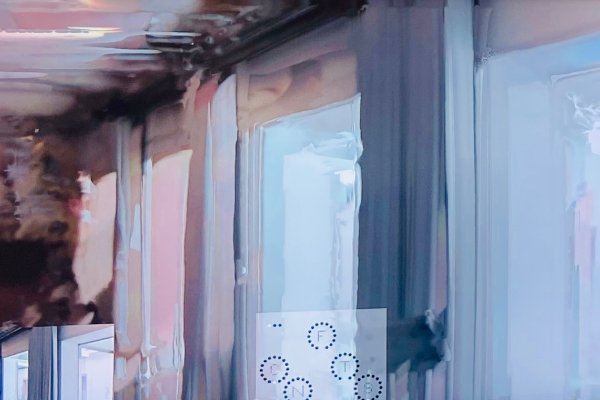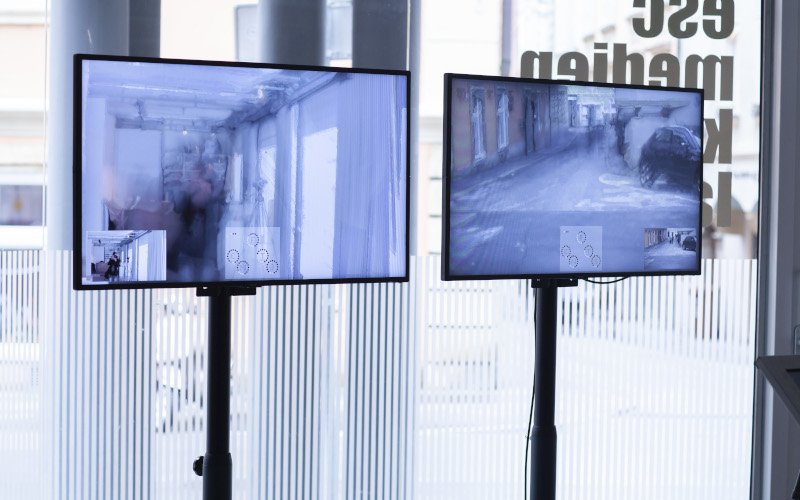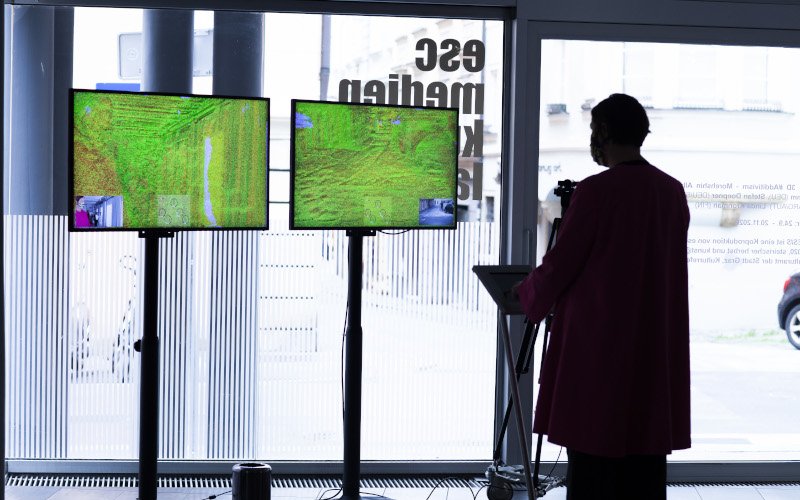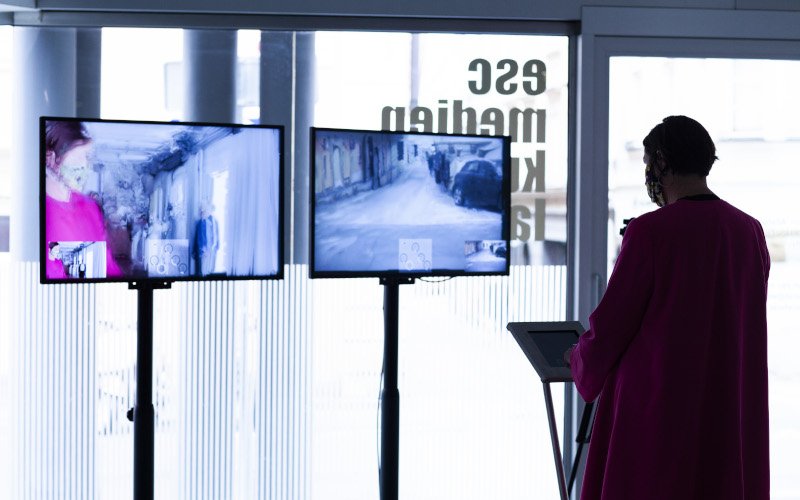Membrane

Algorithmic spaces of action not only increasingly determine our image of reality, they generate our reality as concretizations in the self-generated space of possibility. Using Membrane, a generative video installation, as an example, an artistic space of action within Artificial Intelligence is described and it is asked whether algorithms are capable of producing something new and unthought of, and whether the shift in perspective from analysis to synthesis and fiction can help to evaluate analytical procedures differently and to recognize them as special, normative forms of social fiction, which serve above all to self-reinforce existing structures.
Membrane processes pictorial material similar to a classical, painterly gesture. The processing is left to a software that uses special "machine learning algorithms" (technical and conceptual execution: Peter Serocka) and focuses on smaller, formal pictorial elements and features. Abstract artifacts are displayed in real-time video streams and managed via a self-learning neural network. Visitors have the possibility to choose between a recognizable situation (real image of the street) and abstraction, a speculative continuation of what they have seen as a self-organization of the image learned in time: The controls change the values of a shader [C]rossbar, the [N]umber of shaders, [F]eedback, [T]ime and [S]pace. This procedure allows to create and finalize images by yourself. The surrounding sound space consists of recordings of the city of Graz in September 2020 realized by Tobias Zimmer.
In general, the algorithms used - neural networks - reduce complexity and act like filters on the input image data. The principle openness, the contingency of the image material is deliberately reduced; in extreme cases, the stream of images is reduced to one statement. Neural networks, a central method of machine learning, work with networked "sensors" which can store values in addition to their "perceptual capabilities". A neuron's effect is completely dependent on the architecture of its networking with other neurons. The totality of neurons creates abstract, network-like learning environments, which are able to reproduce properties of data sets and to evaluate them for similarity or distinction.
As soon as the focus is not on recognition and analysis, but on the synthesis potential of algorithms, process classes such as neural networks, genetic algorithms, and many other methods become little more than helpful metaphors that allow us to deal with the surplus of rule-based action possibilities.
Membrane is the illustration of algorithmic fiction in the digital image. The algorithms developed in computer science are not used here as analysis tools, but for synthesis. It is not a matter of recognizing the content of an image, but of its production. The software should be able to react to the inclinations of the viewer in an open field of development possibilities.
Please enter the URL of your website.:
Kooperationen/Team:
Support: Tobias Zimmer



